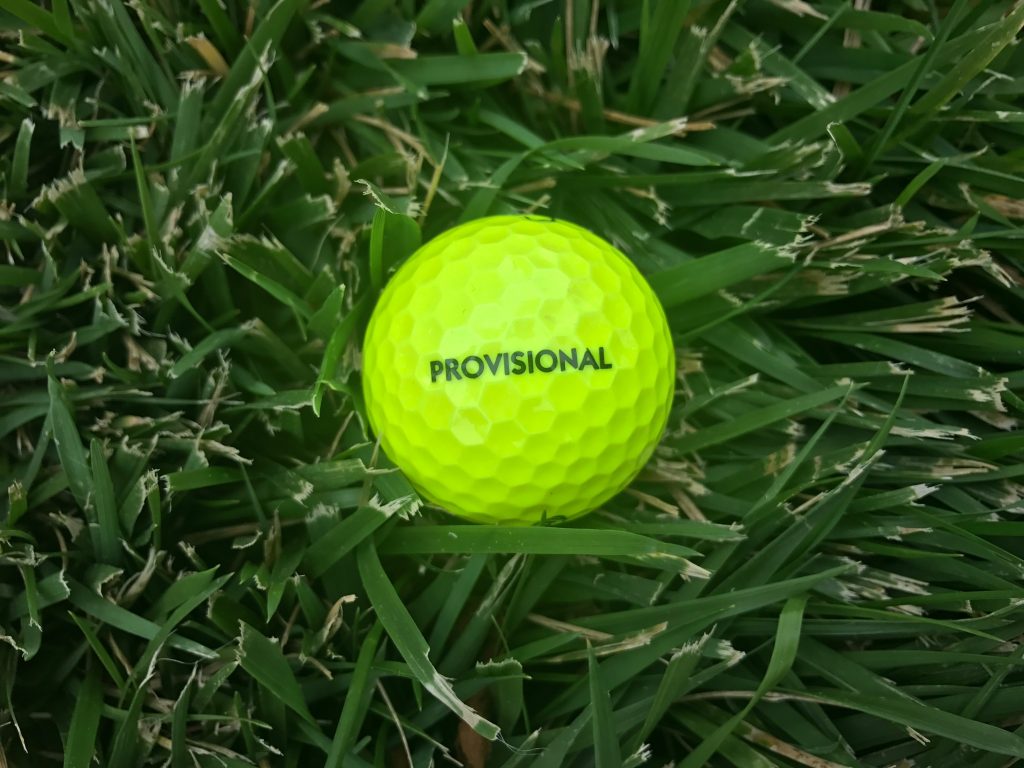Playing a provisional ball has several benefits with one being saving time in the play of a hole. Anytime a player’s ball may be lost outside of a water hazard or out of bounds the player is strongly encouraged to play a provisional ball. This allows the player to avoid having to return to that spot to continue play of the hole should the original ball be lost or out of bounds.
There are a couple of requirements that must be met before playing a provisional ball:
The player must announce to his opponent in match play or to a fellow competitor or his marker in stroke play that the player intends to play a provisional ball. A provisional ball cannot be assumed and the announcement is critical to ensure that the player can proceed with the original ball if it is found in bounds. Failure to make the announcement means that the player has put a new ball in play under the provisions of stroke and distance and the original ball is deemed to be lost by the Rules of Golf.
The provisional ball must be played before the player or his partner goes forward to search for the original ball. Since one of the primary reasons for a provisional is to save time, the player must proceed with the provisional before proceeding forward to search for the original ball. Once the player has gone forward more than a short distance, a provisional is no longer allowed as the time saving advantage has evaporated.
Once the provisional ball has been played, the player may continue to make additional strokes at the provisional ball until that provisional has reached the place where the original ball is likely to be. Once the provisional has reached that area, the player must search for the original ball before further playing the provisional. Making another stroke at the provisional ball changes the status of the provisional ball so that it becomes the ball in play and the original ball is deemed to be lost by the Rules of Golf.
If the original ball is found in bounds the provisional ball must be abandoned and the player must continue play of the hole with the original ball.
After searching for the original ball, if it is lost outside of a water hazard or is out of bounds, the provisional ball becomes the ball in play under stroke and distance as provided in Rule 27-1.
If the original ball is found in bounds but in a water hazard, or it is virtually certain that the original ball is in a water hazard, the provisional ball must be abandoned and the player may play the original ball or proceed with the applicable options provided in the water hazard rule (Rule 26).
In rare circumstances, if after a search, it is virtually certain that the original ball, which has not been found, is in an obstruction or an abnormal ground condition or has been moved by an outside agency the player may proceed under the applicable rule that covers the situation. In these specific cases, if the player decides not to proceed under the applicable rule the player may continue play of the hole with the provisional ball under penalty of stroke and distance. (Rule 27-2)
If the provisional ball is abandoned the strokes made at that provisional ball do not count for the score of the hole.
Should a provisional ball also be possibly lost outside of a water hazard or out of bounds additional provisional ball(s) may be played, following all the procedures listed above. There is no limit to the number of provisional balls that may be played.
It is important to be able to determine which ball is the original and which one is the provisional. The player should have some way to tell which ball is which such as placing a distinctive mark on the provisional ball so it can be identified as such. This is particularly important should more than one provisional ball be played from the same location when each provisional must be individually identifiable.
Provisional balls are played using detailed procedures, but if they are used when appropriate they can save significant amounts of time and the frustration of having to return to the location where the prior shot was made.


